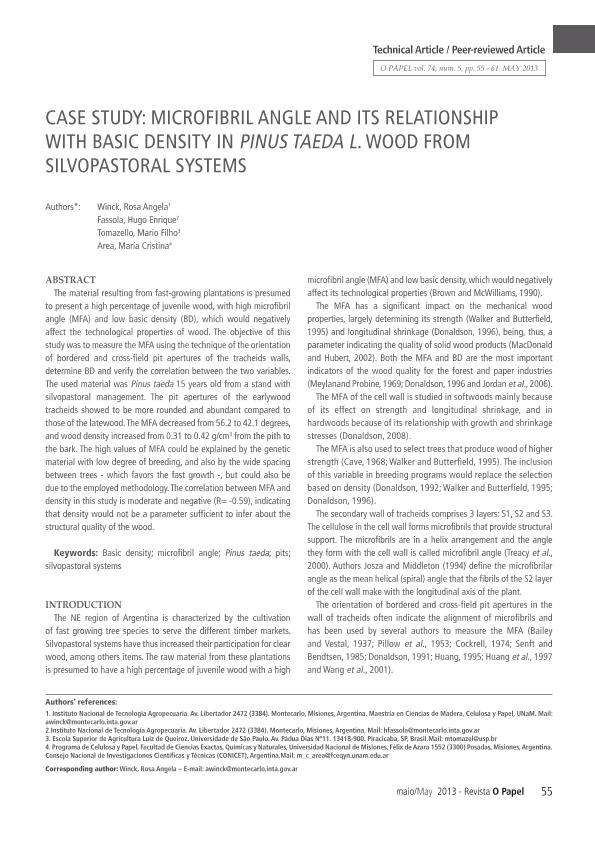Artículo
Case study: Microfibril angle and its relationship with basic density in Pinus taeda L. wood from silvopastoral systems
Fecha de publicación:
05/2013
Editorial:
ABTCP
Revista:
O Papel
ISSN:
0031-1057
Idioma:
Inglés
Tipo de recurso:
Artículo publicado
Clasificación temática:
Resumen
The material resulting from fast-growing plantations is presumed to present a high percentage of juvenile wood, with high micro!bril angle (MFA) and low basic density (BD), which would negatively affect the technological properties of wood. The objective of this study was to measure the MFA using the technique of the orientation of bordered and cross-!eld pit apertures of the tracheids walls, determine BD and verify the correlation between the two variables. The used material was Pinus taeda 15 years old from a stand with silvopastoral management. The pit apertures of the earlywood tracheids showed to be more rounded and abundant compared to those of the latewood. The MFA decreased from 56.2 to 42.1 degrees, and wood density increased from 0.31 to 0.42 g/cm3 from the pith to the bark. The high values of MFA could be explained by the genetic material with low degree of breeding, and also by the wide spacing between trees - which favors the fast growth -, but could also be due to the employed methodology. The correlation between MFA and density in this study is moderate and negative (R= -0.59), indicating that density would not be a parameter suf!cient to infer about the structural quality of the wood.
Palabras clave:
Basic Density
,
Microfibril Angle
,
Pinus Taeda
,
Pits
Archivos asociados
Licencia
Identificadores
Colecciones
Articulos(CCT - NORDESTE)
Articulos de CTRO.CIENTIFICO TECNOL.CONICET - NORDESTE
Articulos de CTRO.CIENTIFICO TECNOL.CONICET - NORDESTE
Citación
Winck, Rosa Angela; Fassola, Hugo Enrique; Tomazello, Mario Filho; Area, Maria Cristina; Case study: Microfibril angle and its relationship with basic density in Pinus taeda L. wood from silvopastoral systems; ABTCP; O Papel; 74; 5; 5-2013; 55-61
Compartir




